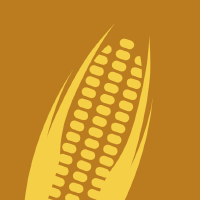Topic Editors


Sustainable Crop Production from Problematic Soils to Ensure Food Security
Topic Information
Dear Colleagues,
Soil is used for a variety of purposes, including cropping, pasturing, gardening, forestry, agroforestry, construction, etc. The aim is always to find the most suitable type of soil to get the best outcome. About 10% of the total soil resources of the world have little or no considerable limitations when it comes to cropping, yet most of the soils have some kind of limitations in terms of growing crops. Some soils can be productive for only a limited number of crops but offer serious limitations for others. Soils that have serious limitations for agricultural and other land uses are traditionally called problem soils. It is predicted that our planet will be populated with 9 billion people in 2050. This will result in serious issues with food, water, and energy supply, particularly in less developed countries. Considering the human demand, pressure on natural resources has already reached its critical limits. Intensive urbanization has already pressurized available soil resources, and issues around problematic soils are increasing, especially in the developing world, due to mismanagement. Therefore, utilizing problematic soils for agriculture production is inevitable in the current global food demands. This issue will mainly focus on innovative research to attain sustainable crop production from problematic soils including saline, sodic, compact, contaminated, and degraded soils. This issue will cover all the innovative practices to manage soils with problems.
Dr. Zhongbing Chen
Dr. Safdar Bashir
Dr. Saqib Bashir
Topic Editors
Keywords
- contaminated soils
- salinity
- sodicity
- heavy metals
- stress
- abiotic stress
- wastewater
Participating Journals
| Journal Name | Impact Factor | CiteScore | Launched Year | First Decision (median) | APC | |
|---|---|---|---|---|---|---|

Agriculture
|
3.3 | 4.9 | 2011 | 19.2 Days | CHF 2600 | Submit |

Agronomy
|
3.3 | 6.2 | 2011 | 17.6 Days | CHF 2600 | Submit |

Crops
|
- | - | 2021 | 22.1 Days | CHF 1000 | Submit |

Horticulturae
|
3.1 | 3.5 | 2015 | 16.9 Days | CHF 2200 | Submit |

Plants
|
4.0 | 6.5 | 2012 | 18.9 Days | CHF 2700 | Submit |

MDPI Topics is cooperating with Preprints.org and has built a direct connection between MDPI journals and Preprints.org. Authors are encouraged to enjoy the benefits by posting a preprint at Preprints.org prior to publication:
- Immediately share your ideas ahead of publication and establish your research priority;
- Protect your idea from being stolen with this time-stamped preprint article;
- Enhance the exposure and impact of your research;
- Receive feedback from your peers in advance;
- Have it indexed in Web of Science (Preprint Citation Index), Google Scholar, Crossref, SHARE, PrePubMed, Scilit and Europe PMC.

